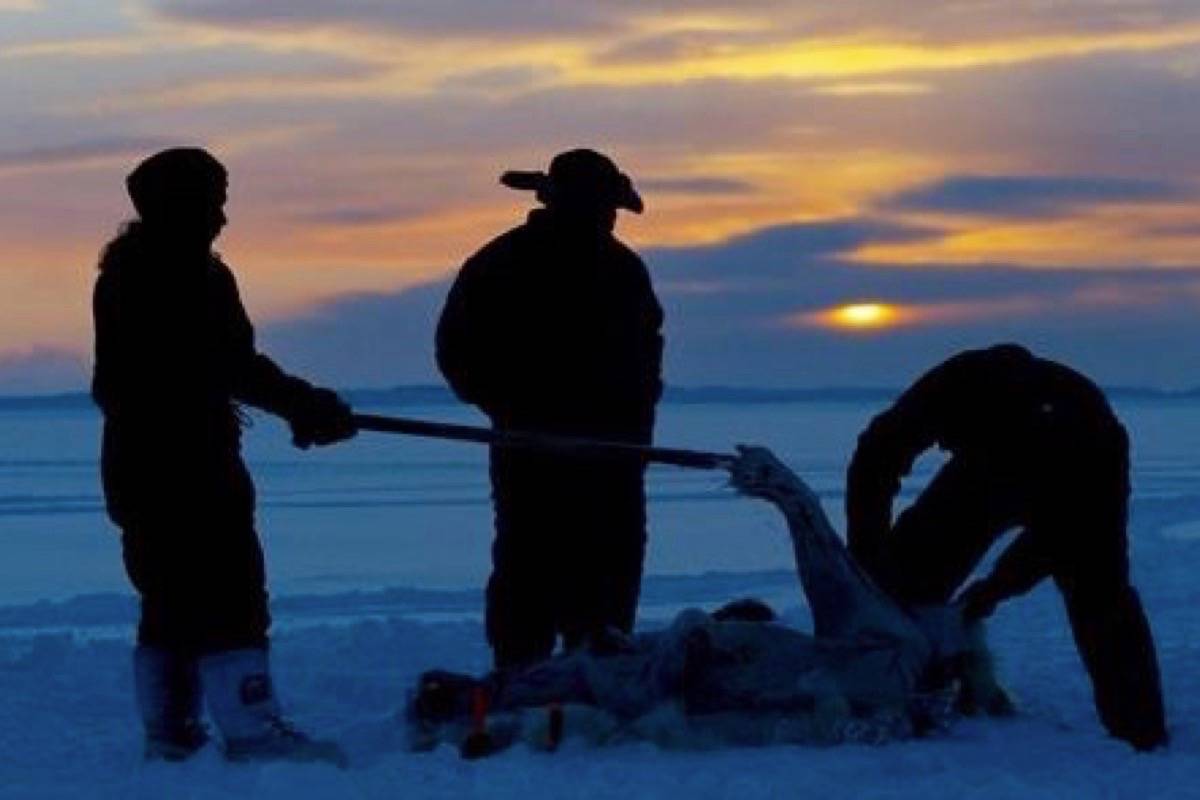There are too many polar bears in parts of Nunavut and climate change hasn’t yet affected any of them, says a draft management plan from the territorial government that contradicts much of conventional scientific thinking.
The proposed plan — which is to go to public hearings in Iqaluit on Tuesday — says that growing bear numbers are increasingly jeopardizing public safety and it’s time Inuit knowledge drove management policy.
“Inuit believe there are now so many bears that public safety has become a major concern,” says the document, the result of four years of study and public consultation.
“Public safety concerns, combined with the effects of polar bears on other species, suggest that in many Nunavut communities, the polar bear may have exceeded the co-existence threshold.”
Polar bears killed two Inuit last summer.
READ MORE: One hunter dead, two injured after Nunavut polar bear attack
READ MORE: Nunavut man killed by polar bear while protecting kids
The plan leans heavily on Inuit knowledge, which yields population estimates higher than those suggested by western science for almost all of the 13 included bear populations.
Scientists say only one population of bears is growing; Inuit say there are nine. Environment Canada says four populations are shrinking; Inuit say none are.
The proposed plan downplays one of the scientific community’s main concerns.
“Although there is growing scientific evidence linking the impacts of climate change to reduced body condition of bears and projections of population declines, no declines have currently been attributed to climate change,” it says. ”(Inuit knowledge) acknowledges that polar bears are exposed to the effects of climate change, but suggests that they are adaptable.”
Environment Canada’s response says that’s “not in alignment with scientific evidence.” It cites two studies suggesting the opposite.
Andrew Derocher, a University of Alberta polar bear expert, is blunter.
“That’s just plain wrong,” he said. “That’s been documented in many places now — not just linked to body condition but reproductive rates and survival.”
The government of Nunavut declined an interview request.
Its position is strongly supported by the 11 Inuit groups and hunters’ organizations that made submissions.
“(Inuit knowledge) has not always been sufficiently incorporated by decision-makers,” says a document submitted by Nunavut Tunngavik Inc., the Inuit land-claim organization. “The disconnect between the sentiment in certain scientific communities and (Inuit knowledge) has been pronounced.”
Pond Inlet wants to be able to kill any bear within a kilometre of the community without the animal being considered part of the town’s quota. Rankin Inlet simply wants to lower bear populations.
In its submission, the Kitikmeot Regional Wildlife Board expresses frustration with how polar bears are used as an icon in the fight against climate change.
“This is very frustrating for Inuit to watch … We do not have resources to touch bases with movie actors, singers and songwriters who often narrate and provide these messages,” it says.
“We know what we are doing and western science and modelling has become too dominant.”
The territory’s wildlife management board will take what it hears at the public hearings and include it in a final document, which will go before the Nunavut cabinet for approval.
Bob Weber, The Canadian Press



